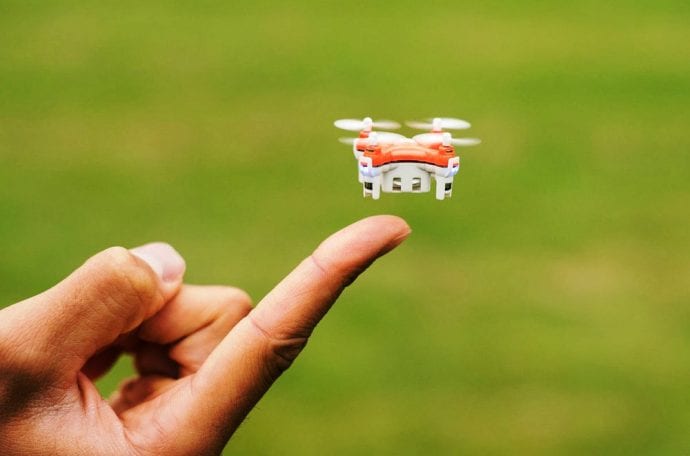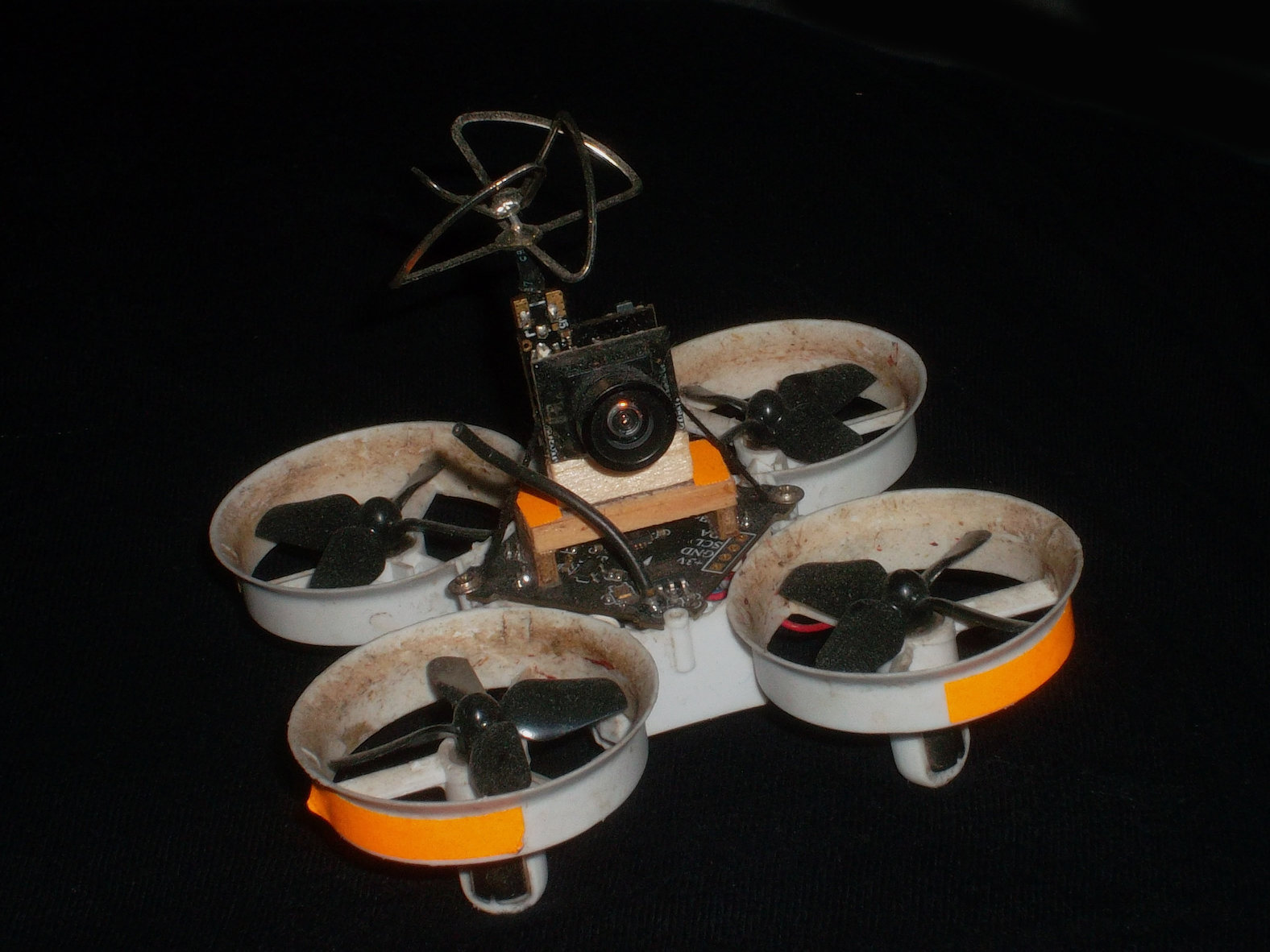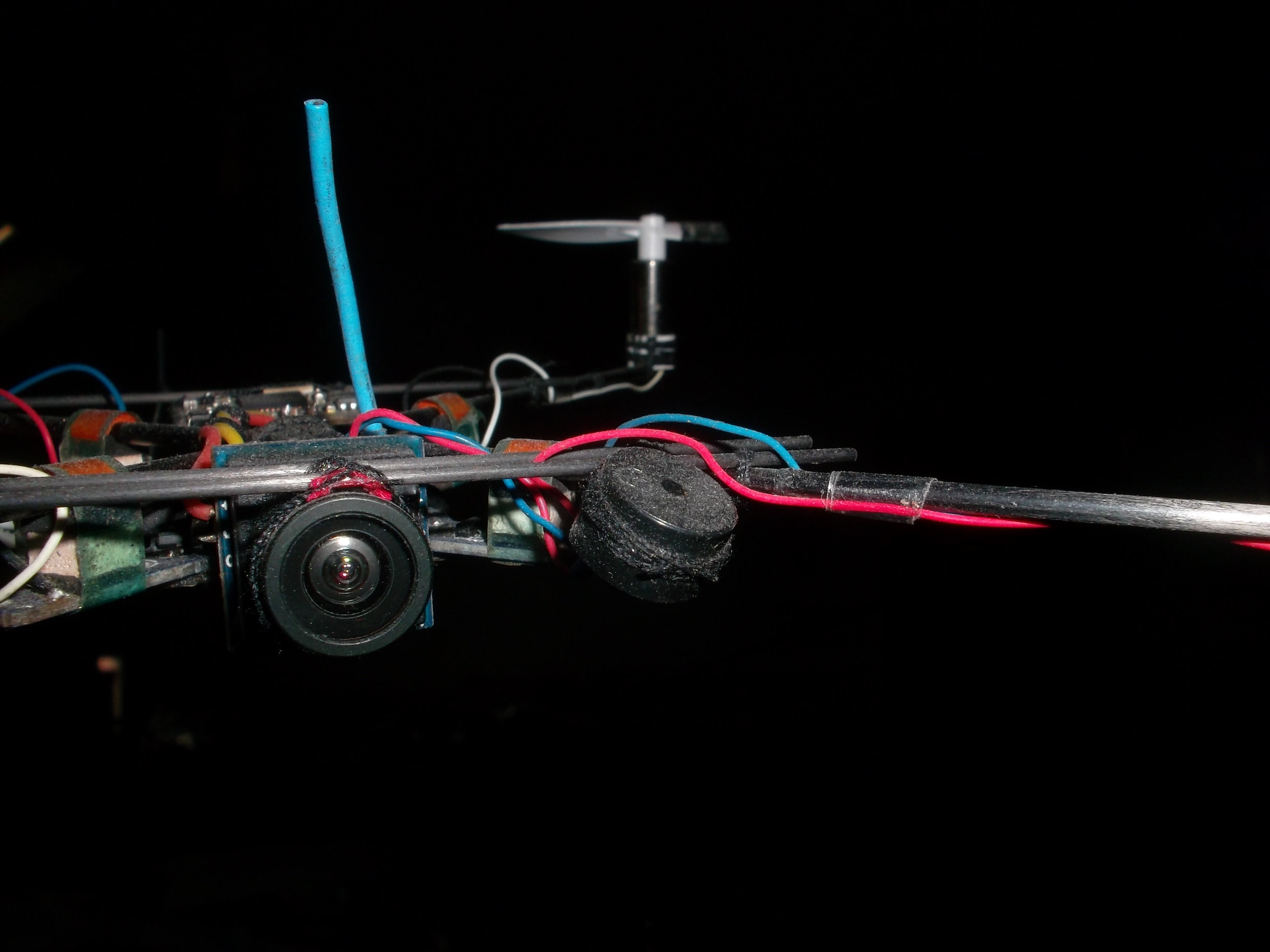
Drones usually have a GPS sensor and can tell the pilot where they fell. But what if your quad weighs 25 grams with battery, and it just doesn't have GPS? There are many ways for fans of this hobby to find their favorite toy. Here is a list of such methods and various tips.
Apply power with the remote control in short pulses. This will make it easier to find the noise. Just turn on the power for a short while, as some of the blades are probably stuck somewhere in the grass or leaves. If you turn on a locked motor for a long time, it will burn out. It all depends on the quad, but you usually need to leave the remote control turned on after an accident. Some types of drones prevent communication from being restored after disconnecting the remote control.
Make the landing gear and propellers bright, use colors that are not often found in nature and are easily visible to the eye: white, orange, red. And colors such as violet, blue and light blue, although they seem bright at first glance, are lost in dense vegetation. In addition, in the human eye, very few cones that recognize blue are located closer to the center, so it is difficult to see it from afar. Yellow and green are all too common in nature (while the colors for LEDs for night flights are better to choose white, orange and red). If you want to make a dim night illumination for a quadric, choose a blue-green LED with a wavelength of about 498 nm - rods are most sensitive to this range. You can also wrap the batteries with orange foil, and make a small flag on the antenna - in caseif these parts fall off when dropped.
Record a video of the flight and have the ability to quickly play it back - with glasses or on the screen. By carefully examining the latest footage, you seriously narrow your search. Define conspicuous points, use triangulation and parallax. Please note that the drone could fly several tens of meters after the last frame was recorded.
Use glasses as a goniometer... One of the simplest uses for glasses is to test the signal strength. The stronger the signal, the closer you are. But points also provide direction. Lean them against your stomach and turn slowly. When the signal is at its minimum, the quad will be behind you. When the signal is at 100%, and you cannot see the drone, it means that it is stuck somewhere above the ground, where nothing is blocking the antenna. The sensitivity of the glasses can be reduced by unscrewing the antennas. Conversely, when the signal is weak, screw on the directional antenna and move it from side to side. Please note that the signal will disappear after a few minutes, you need to act quickly.
Stick the fluorescent tape on the drone. It will be possible to return at night and shine an ultraviolet flashlight everywhere. The sticker will be visible from several tens of meters.

Some people recommend using reflective sheeting instead of fluorescent. If you hold the flashlight close to your head at eye level, you will see reflected light from afar. Reflective glass beads can also be used.
It is useful to know the places where you are flying. Where I often launch the drone, sometimes I can figure out where it fell just by looking at a photo of leaves or stones.
Use a buzzer... It can be installed on a drone weighing 50 grams. It can be connected to the remote control, but it can also be installed independently, the main thing is to connect it to the battery. When the battery runs out, the buzzer with the help of the built-in battery will start making sounds every 10 seconds, and will do so for several hours. On a quadric weighing 25 grams, I soldered a micro-horn to the output for powering the LED, and hacked the code a little . After that, it can be turned on with several buttons on the remote control. However, in this case, it will beep only while the drone has a charge. Some quadcopters can beep with propellers.

One of the users suggested putting a buzzer on the copter to find the keys. You can remove its plastic case, and thread it to the quadric, at the same time securing the battery. If the drone falls not very far from you, it may help. Also one of the options is a Bluetooth key beeper . They need to be tied to a smartphone. When it is within range, you can send a squeak command from your smartphone. Some apps even measure signal strength to help you target the key fob. But even if the smartphone is not tied to it, you can see a list of nearby Bluetooth devices and their signal strength on the phone. The keyfob ID must be written down in advance - it looks something like this: 14: BB: 6E: 61: 0A: 6F.
Pay attention to animals - rarely, but it can help. If a cat or fox is staring in one direction, it is possible that this is where the drone fell, and the animal is wondering if this looks like a wounded bird that can be obtained.
Carry a fishing rod with you. It is convenient for her to get the copter from tree branches and bushes, but she can come up with more sophisticated uses. Suppose that the drone fell into the overgrown blackberry bushes, it is not visible from several meters, but it is still transmitting the video. Use a fishing rod in the bushes. Once you see it in the video, you will know where your drone is. A neodymium magnet can be attached to the end of the rod to hook the copter to the motor. In the photo below, the magnet is attached to a fishing rod with a polyethylene thread (it is used to catch sharks and produce bulletproof vests). A metal wire is wound around the rod so that the magnet is magnetized to it.

Search first where it is easier to search. Approach the question rationally. Use your brains, thoroughly comb the territory. If you haven't found anything, then proceed to less likely places.
If the aircraft falls into water, remove the battery immediately (some users claim that it must be disconnected while it is still in the water). Water your quad with whatever you have that most resembles distilled water. Shake moisture out of it. Don't try to blow it out - breathing harms electronics and optics (due to organic matter emanating from the lungs). Dry the aircraft and battery in a well-ventilated area for at least 24 hours. I usually hang them on the fan grill.
Once found, immediately check for the absence of components. Propellers, antennas, battery, lenses. If something falls off, most likely it is somewhere near the place of the fall.
Borrow a dog from a friend. Walking with a friend, I once looked for a tiny lens for half an hour, and when I was already desperate, his dog suddenly became more active, and in 10 seconds he stuck his nose exactly where it was lying. One user suggested spraying the drone with perfume to make it easier for the dog to find it. If you have a dog like this, it makes sense. Some dogs like copters very much , so they will be happy to help you.
One user uses a metal detector to look for a drone in tall grass. These aircraft need tuning, so first use a different aircraft, laying it on the grass and adjusting the aircraft. Or adjust it beforehand.
Plan your flight. Fly over difficult terrain first when the aircraft is full of energy. When the battery starts to run down and the aircraft is about to fall, fly over areas where it will be easier to find.
Be like a MacGyver and carry duct tape with you. I am using 3M 550 Scotch narrow tape. It can be used, for example, by extending the rod with twigs. The Swiss MacGyver knife is also a must-carry - in order not to excite the police, I wear the smallest...
There are some very durable trees that cannot be shaken. Use a rope by extending it in the middle of the height of the tree or in the middle of a branch. Then you can pull the rope off the ground and shake part of the tree. To throw a rope there, first throw a stone with a tied fishing line there, for which then tighten the rope. Once I lifted the line up with the H8 Mini copter, rounded the branch, and let it fall.
Attach a rubber band to the bottom of the aircraft - ideally an orange one for gift wrapping. Two meters will be enough. Even a Cheerson CX-10 can lift such a rubber band. ... If the drone falls into tall grass or gets stuck in bushes, the rubber band will be visible from a long distance. The only problem is that the copter can fall due to the rubber band. If you are doing complex shapes, or if the day is windy, the rubber band can get caught in the propeller - so this tip is only suitable for beginners. The rubber band can also be used for demonstration: when the copter flies low above the ground, pulling the rubber band behind it, it becomes like a snake.